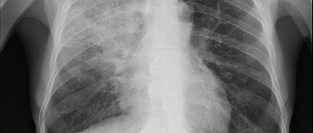Пусть трактор пашет, он железный
May 21, 2012 (Lyon, France) — Sitting at work raises the risk of dying from cardiovascular (CV) and metabolic diseases, as well as the risk of dying from all causes, regardless of any exercise in which the individual may engage. That was the finding of a study reported here at the 19th European Congress on Obesity (ECO) by Anne Grunseit, PhD, from the Prevention Research Collaboration in the School of Public Health at the University of Sydney, Australia, and Norwegian colleagues.
Research is increasingly focusing on sedentary behavior with low energy expenditure, including sitting and lying down, as behavioral risk factors for obesity and chronic disease. Sitting occurs during travel, while watching television, using computers, and reading. But with people often spending at least 9 hours a day at work, with fewer than 20% of jobs requiring physical exertion, and with many people spending at least 4 hours a day sitting at work, the sedentary time at work is high, and many people are affected.
The investigators therefore aimed to evaluate the relationship between occupational sitting, body mass index (BMI), and mortality in a general population sample. They used a longitudinal cohort from Norway, the Nord-Trøndelag Health Survey, and stratified the independent variable as mostly sitting, much walking at work, much walking or lifting, and heavy physical labor. Between 1995 and 1997, 20-year-old Norwegians self-reported their level of sitting at work. They were stratified by BMI (healthy, 18.5 to <25 kg/m2; overweight, 25 to <30 kg/m2; and obese, 30 kg/m2 or greater). Individuals who died within 3 years of the survey were excluded to control for the emergence of preexisting disease. About 30% of participants reported having an occupation in which they were mostly sitting.
Of 45,259 participants completing the study (evenly divided between men and women), just over 40% each were either of normal weight or were overweight, and about 15% were obese. During a follow-up period of 12 to 14 years, 4421 died. The crude all-cause mortality results increased as BMI increased from normal weight to overweight to obese (5.0, 6.8, and 9.4 deaths/1000 person-years, respectively). The trend was similar for CV/metabolic disease mortality (1.8, 2.8, and 4.4 deaths/1000 person-years, respectively).
After adjusting for BMI and other variables (sex, education, light and hard exercise, general health, smoking status, and cardiometabolic disease), sedentary work was associated with higher all-cause mortality and CV/metabolic disease mortality compared with occupations with much walking, much walking or lifting, or heavy physical labor (all P < .01).
All-cause mortality risk increased along with BMI for all levels of occupational activity. The mortality curves over time were the same for all levels of activity for people with a healthy BMI but diverged according to activity level as BMI increased, with the greatest risk for sedentary workers in the obese range.
"For example, holding all else equal, someone with an occupation that involved walking and lifting had a 27% lower chance of dying than someone who mostly sat in their occupation among those in the obese category," Dr. Grunseit said.
The curves for CV mortality showed a similar pattern. "That is, the hazards for the more active occupations were not significantly different from those with the sedentary occupation among those with a healthy BMI but were lower for both overweight and obese categories," she reported. CV mortality risk was 33% lower among overweight respondents and 45% lower among obese respondents who had walking and lifting occupations compared with sitting. For the obese group, there was some attenuation of the beneficial effect for those individuals doing physical labor at work.
Dr. Grunseit said in summary that the data suggest that compared with mostly sitting, "those in occupations involving some activity have lower rates for all-cause and cardiovascular or metabolic disease mortality, even when adjusted for demographic, health, and physical activity characteristics [outside of work]." The protective effect of occupational activity appeared to be significant for the groups whose BMIs were in the overweight or obese categories.
Dr. Grunseit noted that a limitation of the study is that it did not include a category for standing, nor did it adjust for quality of diet. Strengths of the study included its prospective and large general population sample, long follow-up, and adjustment for a range of covariates.
The authors suggested that reduced sitting for work would benefit overweight or obese people the most because they already have a higher baseline risk for mortality.
Session moderator Berit Heitmann, PhD, professor of nutritional epidemiology at the Institute of Preventive Medicine of the Greater Copenhagen Hospitals in Copenhagen, Denmark, commented to Medscape Medical News that sitting may be detrimental not only because of its lack of activity but also because it may confer a negative effect in itself.
"It seems to be 2 separate mechanisms...[and] we spend so much time sitting on our behinds, so it's probably 23 hours of our time we're either sitting or lying...and it seems there are 2 separate mechanisms going on that of course need to be disentangled," she said. She pointed out that a number of other studies have shown bad effects of sitting.
Dr. Heitmann wondered "if there was a synergy between being inactive and sitting." She suggested that Dr. Grunseit "could have examined that just by separately looking at those who were inactive in their leisure time and those who were active in their leisure time" and looking for associations. "It would be quite likely that there would have been a synergy between the 2."
In essence, the question would be whether more activity minimizes the effect of the sitting. As it stood, the researchers adjusted for exercise but did not do subgroup analyses, Dr. Heitmann noted.
Although more studies showing consistent results would be needed before making any definite recommendations, Dr. Heitmann said an easy recommendation now would be for people to spend more time standing.
"You can do a lot of desk work actually standing. You can do meetings standing, or you could vary so that you're not sitting all the time but actually taking a break to stand, and that would be the immediate recommendation taken out of this," she said. "The tone from the muscles from standing is expending energy and may actually be contributing to the healthy factors about not sitting."
Neither Dr. Heitmann, who had no involvement in the study, nor Dr. Grunseit disclosed any relevant financial relationships.
19th European Congress on Obesity (ECO). Abstract #126. Presented Thursday, May 10, 2012.
Research is increasingly focusing on sedentary behavior with low energy expenditure, including sitting and lying down, as behavioral risk factors for obesity and chronic disease. Sitting occurs during travel, while watching television, using computers, and reading. But with people often spending at least 9 hours a day at work, with fewer than 20% of jobs requiring physical exertion, and with many people spending at least 4 hours a day sitting at work, the sedentary time at work is high, and many people are affected.
The investigators therefore aimed to evaluate the relationship between occupational sitting, body mass index (BMI), and mortality in a general population sample. They used a longitudinal cohort from Norway, the Nord-Trøndelag Health Survey, and stratified the independent variable as mostly sitting, much walking at work, much walking or lifting, and heavy physical labor. Between 1995 and 1997, 20-year-old Norwegians self-reported their level of sitting at work. They were stratified by BMI (healthy, 18.5 to <25 kg/m2; overweight, 25 to <30 kg/m2; and obese, 30 kg/m2 or greater). Individuals who died within 3 years of the survey were excluded to control for the emergence of preexisting disease. About 30% of participants reported having an occupation in which they were mostly sitting.
Of 45,259 participants completing the study (evenly divided between men and women), just over 40% each were either of normal weight or were overweight, and about 15% were obese. During a follow-up period of 12 to 14 years, 4421 died. The crude all-cause mortality results increased as BMI increased from normal weight to overweight to obese (5.0, 6.8, and 9.4 deaths/1000 person-years, respectively). The trend was similar for CV/metabolic disease mortality (1.8, 2.8, and 4.4 deaths/1000 person-years, respectively).
After adjusting for BMI and other variables (sex, education, light and hard exercise, general health, smoking status, and cardiometabolic disease), sedentary work was associated with higher all-cause mortality and CV/metabolic disease mortality compared with occupations with much walking, much walking or lifting, or heavy physical labor (all P < .01).
All-cause mortality risk increased along with BMI for all levels of occupational activity. The mortality curves over time were the same for all levels of activity for people with a healthy BMI but diverged according to activity level as BMI increased, with the greatest risk for sedentary workers in the obese range.
"For example, holding all else equal, someone with an occupation that involved walking and lifting had a 27% lower chance of dying than someone who mostly sat in their occupation among those in the obese category," Dr. Grunseit said.
The curves for CV mortality showed a similar pattern. "That is, the hazards for the more active occupations were not significantly different from those with the sedentary occupation among those with a healthy BMI but were lower for both overweight and obese categories," she reported. CV mortality risk was 33% lower among overweight respondents and 45% lower among obese respondents who had walking and lifting occupations compared with sitting. For the obese group, there was some attenuation of the beneficial effect for those individuals doing physical labor at work.
Dr. Grunseit said in summary that the data suggest that compared with mostly sitting, "those in occupations involving some activity have lower rates for all-cause and cardiovascular or metabolic disease mortality, even when adjusted for demographic, health, and physical activity characteristics [outside of work]." The protective effect of occupational activity appeared to be significant for the groups whose BMIs were in the overweight or obese categories.
Dr. Grunseit noted that a limitation of the study is that it did not include a category for standing, nor did it adjust for quality of diet. Strengths of the study included its prospective and large general population sample, long follow-up, and adjustment for a range of covariates.
The authors suggested that reduced sitting for work would benefit overweight or obese people the most because they already have a higher baseline risk for mortality.
Session moderator Berit Heitmann, PhD, professor of nutritional epidemiology at the Institute of Preventive Medicine of the Greater Copenhagen Hospitals in Copenhagen, Denmark, commented to Medscape Medical News that sitting may be detrimental not only because of its lack of activity but also because it may confer a negative effect in itself.
"It seems to be 2 separate mechanisms...[and] we spend so much time sitting on our behinds, so it's probably 23 hours of our time we're either sitting or lying...and it seems there are 2 separate mechanisms going on that of course need to be disentangled," she said. She pointed out that a number of other studies have shown bad effects of sitting.
Dr. Heitmann wondered "if there was a synergy between being inactive and sitting." She suggested that Dr. Grunseit "could have examined that just by separately looking at those who were inactive in their leisure time and those who were active in their leisure time" and looking for associations. "It would be quite likely that there would have been a synergy between the 2."
In essence, the question would be whether more activity minimizes the effect of the sitting. As it stood, the researchers adjusted for exercise but did not do subgroup analyses, Dr. Heitmann noted.
Although more studies showing consistent results would be needed before making any definite recommendations, Dr. Heitmann said an easy recommendation now would be for people to spend more time standing.
"You can do a lot of desk work actually standing. You can do meetings standing, or you could vary so that you're not sitting all the time but actually taking a break to stand, and that would be the immediate recommendation taken out of this," she said. "The tone from the muscles from standing is expending energy and may actually be contributing to the healthy factors about not sitting."
Neither Dr. Heitmann, who had no involvement in the study, nor Dr. Grunseit disclosed any relevant financial relationships.
19th European Congress on Obesity (ECO). Abstract #126. Presented Thursday, May 10, 2012.



















